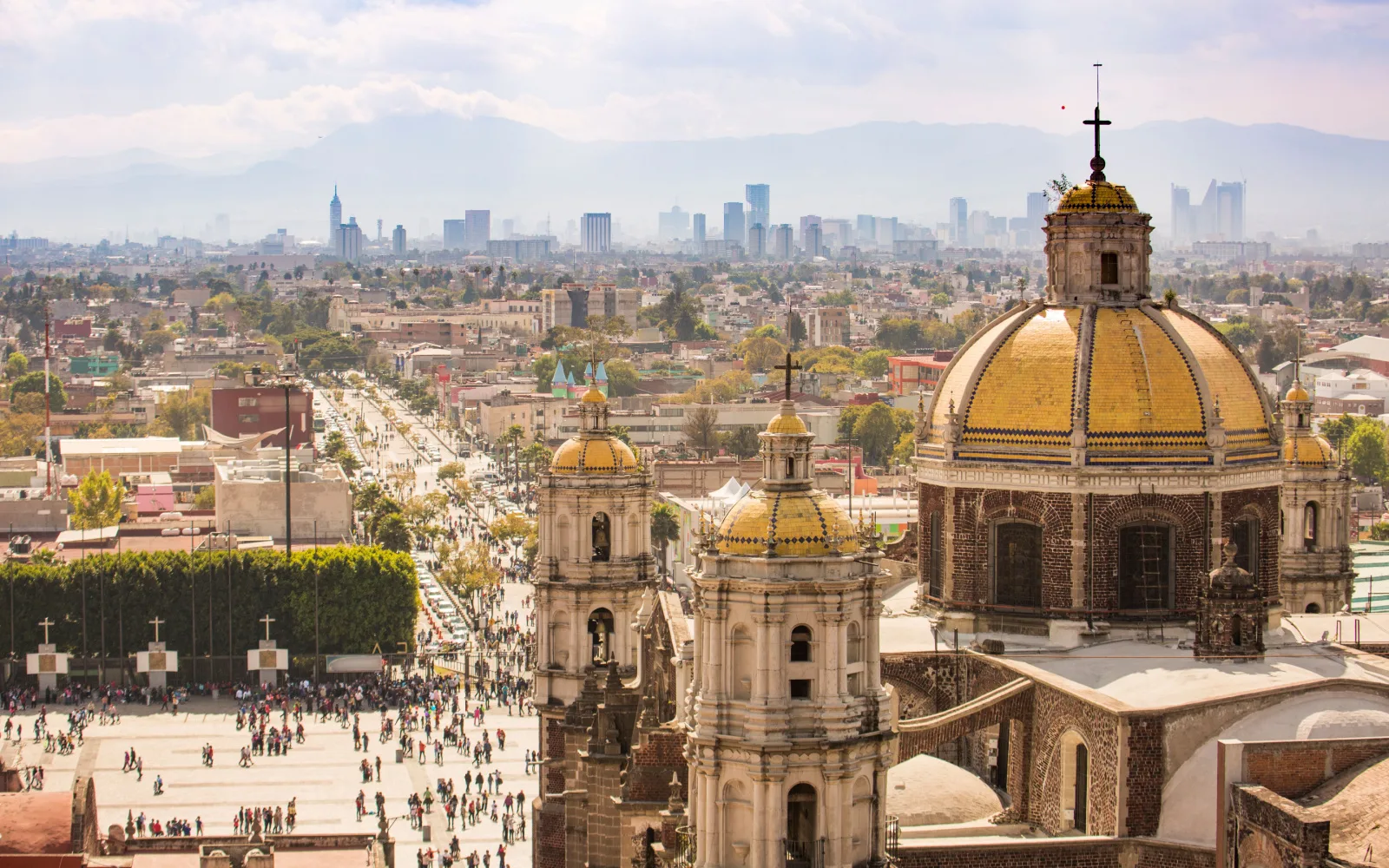Is Mexico City safe to visit?
Mexico City is moderately safe for tourists, but vigilance is necessary due to a significant crime index. While the city experiences a notable amount of petty theft, including pickpocketing and bag snatching, violent crimes are relatively rare for visitors.
Mexico City, Mexico’s bustling capital, is one of the oldest inhabited cities in North America. Visitors flock here to take in the centuries of history, from Aztec temples and Spanish colonial cathedrals to art and architecture that reflect a culture unique to independent Mexico.
The approximately 3.5 million visitors who come to Mexico City each year don’t just come for the past but to enjoy the beauty of the present as well. ; it boasts a vibrant arts scene, thriving nightlife, and a food culture that most other cities would weep to have.
But while this storied destination is rich in culture, history, and things to do, is Mexico City safe to visit? Here’s our take.
Is Mexico City Safe to Visit in 2026?
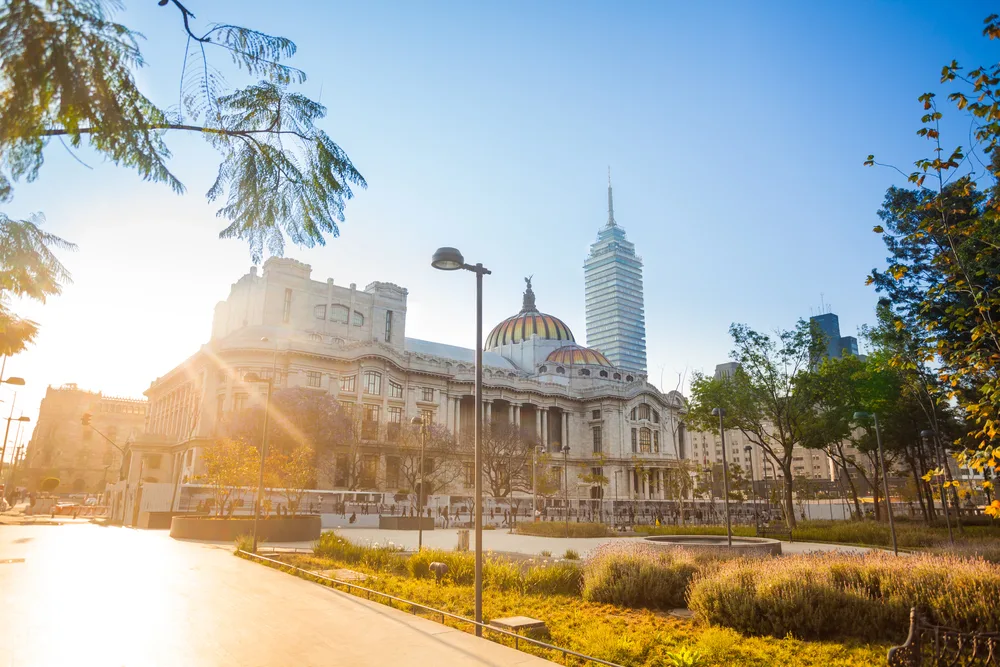
Sergey Novikov/Shutterstock
It depends. You should certainly exercise precautions when visiting Mexico City, and when visiting Mexico as a whole. Like any big city, it has problems with crime, from petty theft to violent crimes such as kidnapping.
However, it’s all relative; keep in mind that Mexico City is one of the safest places in Mexico and has a lower rate of crime than some cities even in the United States. Mexico City does experience crime, like any big city in the world.
Common crimes include:
- Domestic violence
- Sexual assault
- Pickpocketing
- Robbery
- Scams
- Kidnapping
- Assault
However, most of these crimes affect locals, not foreigners. Crime is an unfortunate reality of life in Mexico City, but one that people who are just visiting for a few days can avoid with a few precautions.
Crime in Mexico City is also distributed unevenly across different neighborhoods. Certain neighborhoods see very few violent incidents, while others have very high crime rates (more on which neighborhoods to avoid later).
The United States breaks down its travel advisories for Mexico by region. For Mexico City, it just tells travelers to exercise increased caution, which is just a Level 2 travel advisory.
A CNN report emphasizes that it’s unfair to judge all of Mexico by region. Most of the violent incidents in Mexico occur far away from the capital, and visitors encounter mostly petty crime, if they encounter any crime at all.
Besides crime, there are a few other dangers you should be aware of before visiting Mexico City. Mexicans are engaged in politics — and often furious at the corruption and inaction they perceive in their national government. Mexico City, as the capital, is a prime spot for these protests.
For example, in February 2023, thousands of people rallied in the plaza in front of the presidential palace to protest against changes to the electoral law.
Demonstrations can sometimes turn violent, so it’s better to stay away from large crowds when you see them gather. You should also be aware of the natural environment in Mexico City. Mexico City is located at a high elevation, so some visitors experience altitude sickness.
The air quality is also bad due to considerable pollution, so come prepared with extra medication if you have a history of respiratory issues. Mexico City is also prone to some natural disasters, such as flooding, bad storms, and earthquakes.
Ready to Book?
Unlock Exclusive Discounts on Expedia.com!
Got Travel Insurance?
Protect yourself for unexpected interruptions.
Compare Plans We may be compensated when you book after clicking on one of our links.Crime in Mexico City
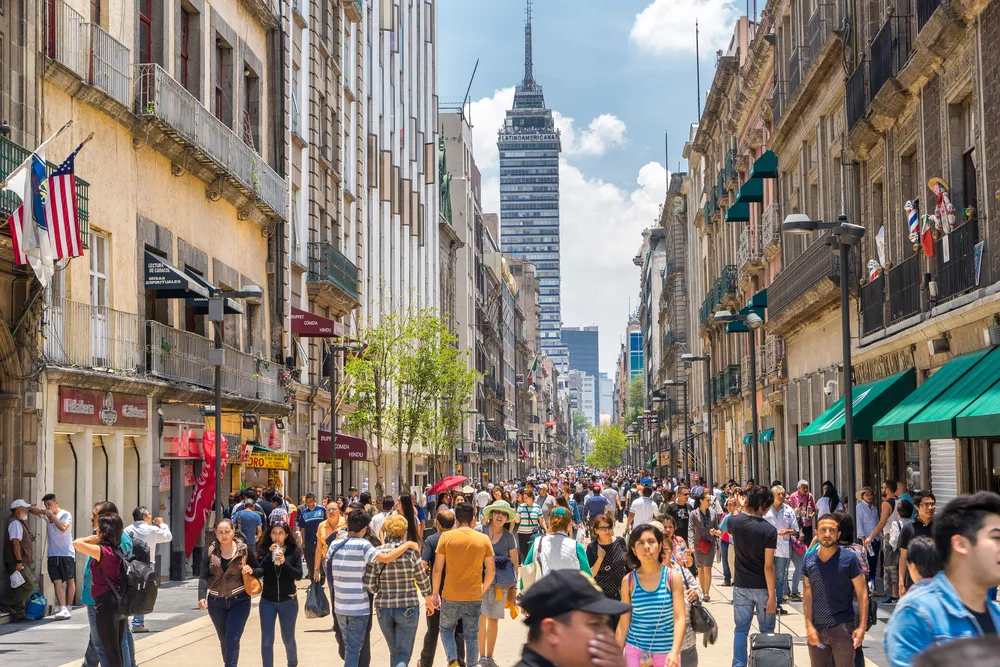
Mexico city, Mexico – Jul 7, 2016: Crowds in the city center/Alex Cimbal/Shutterstock
According to Numbeo, Mexico City has a high crime index of 78.15 out of 100. Most people believe that crime has increased over the past three years — and crime levels were not that low to begin with. 75% of respondents worried about being mugged or robbed.
Other crimes that people worried about included carjacking, vehicle break-ins, assault, drug usage, and theft. There are a few reasons why crime rates are so bad in Mexico City.
One is found directly in the Numbeo survey — the crime respondents say is the worst in Mexico City is corruption and bribery. Law enforcement in Mexico is often compromised by close ties to criminals.
Organized crime groups, mainly drug cartels, plague Mexico City just like they affect the rest of Mexico. Mexico City is also a very divided city by income, and inequality increases the rate of crime. However, the data is not all bad for Mexico City’s crime rate.
According to Statista, crime has decreased over the years, and incidents were at their lowest in 2021. That is optimistic for Mexico City’s future.
Crime in Mexico City is much better than in other regions of Mexico, actually making the intimidatingly large capital one of the safer parts of Mexico for visitors. In fact, Mexico City now has a lower homicide rate than many major cities in the United States.
Petty Theft
The most likely crime visitors will encounter in Mexico City is petty theft and other crimes of opportunity. Pickpockets, bag snatchers, thieves, and scammers like to take advantage of tourists and relieve them of their valuables while they are distracted.
Mexico City has a few hot spots for pickpocketing and other forms of opportunistic theft. The Canadian government warns its citizens in its travel advisory that public transportation in Mexico City, especially the metro, is a hotspot for theft.
Other locations include the Centro Historico, which is very busy with tourists but also attracts a lot of pickpockets. Mexico City also attracts a lot of scammers looking to make a quick buck off of a tourist’s inattention.
As in most places, taxis are the most common sites where tourists get scammed. Make sure that you only take the official Mexico City taxis, which have license plates starting with A or B, taxis from a radio taxi stand, or a ride-hailing app such as Uber.
Never hail a taxi from the street. All authorized taxis must have meters and official identification. To avoid getting robbed in Mexico City, take the same precautions you would take anywhere else.
Leave valuables in your hotel room, or better yet, at home. Take out your phone to take pictures or look up directions, but don’t carry it in your hand. Opt for a bag that zips properly and that you can hold close to your body at all times.
Be alert as you move around Mexico City. If a deal seems too good to be true, such as a street ATM that appears right where you need it or a money exchange stall at the market promising a better deal than the official counter, it probably is too good to be true.
Be careful when strangers approach you, especially if they seem too eager to get your attention or offer to wipe something off of you — those are common pickpocket schemes.
Kidnapping
Although violent crime is rare against tourists in Mexico City, kidnappings do happen. The Australian government warns about the risk of express kidnappings in Mexico City.
During express kidnappings, criminals hold victims for the span of a few hours, during which they visit several ATMs. They only release the victims when they empty their bank accounts completely.
Express kidnappings most often happen on public transportation in Mexico City at night. Never travel by public transportation alone at night or even with a smaller group.
Always opt for an authorized taxi instead. Never hail a taxi from the street as some taxi drivers work in collaboration with criminals to collect victims for kidnappings. Always use an authorized taxi from a taxi stand or ride-sharing application.
Kidnappers will also lurk near ATMs to identify potential victims. If you are taking out cash, only do so from a secure ATM located inside a bank or other official building.
Street ATMs often have card skimmers and leave you more exposed to potential kidnappers. Some kidnappers operate virtually, where they call people and claim to have kidnapped family members.
This scam typically targets older foreigners. If you get a call like this, immediately contact the police and the family members in question before sending any money. Often the family member might be safe at home none the wiser.
Avoiding Bad Areas
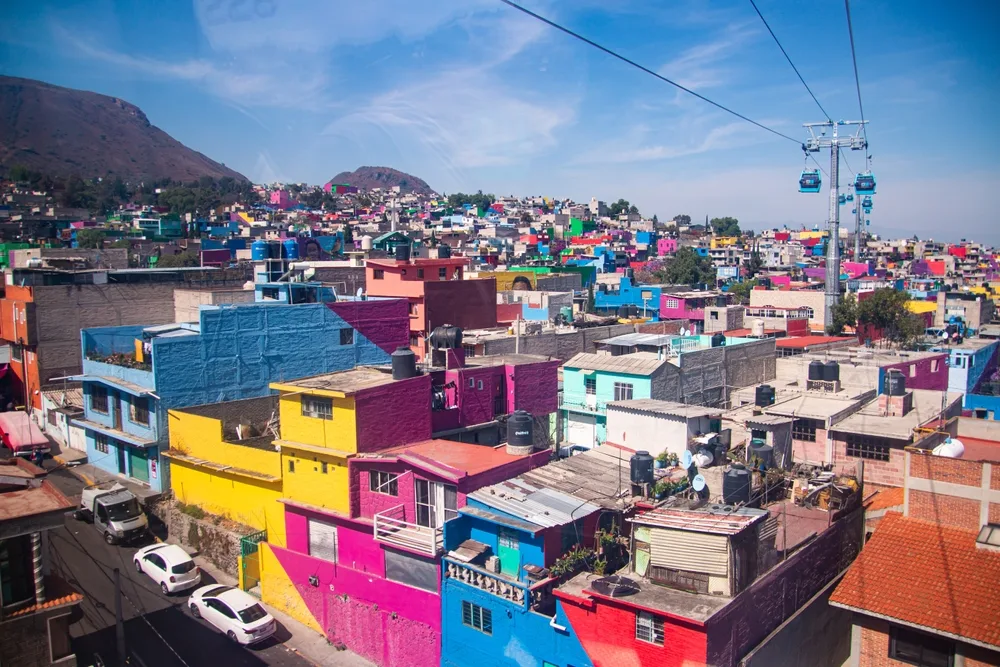
Mexico City, Mexico – April 17, 2022: The cablebús in the Iztapalapa neighborhood in in Mexico City, an aerial tram, the gondola cable car is part of the city’s public transportation system/Davslens Photography/Shutterstock
Mexico City’s crime rate varies drastically from neighborhood to neighborhood. That is why learning to avoid bad areas is crucial to having a safe time when you visit.
One neighborhood to avoid is Iztapalapa, especially if you are a female traveler. Iztapalapa is the neighborhood in the city with the highest rate of violence against women, from domestic violence to sexual assault by strangers.
Tepito is another area that has a very high crime rate. Its famous black market is a great place to score cheap goods, but it is also a haven for pickpockets. If you want to venture into this sort of adrenaline-filled tourism, just make sure that your valuables are safely back in your hotel room.
Other neighborhoods are okay to visit during the day, especially with a trained guide, but you should avoid them at night. These include Doctores, Xochimilco, and Ciudad Neza.
Frequently Asked Questions
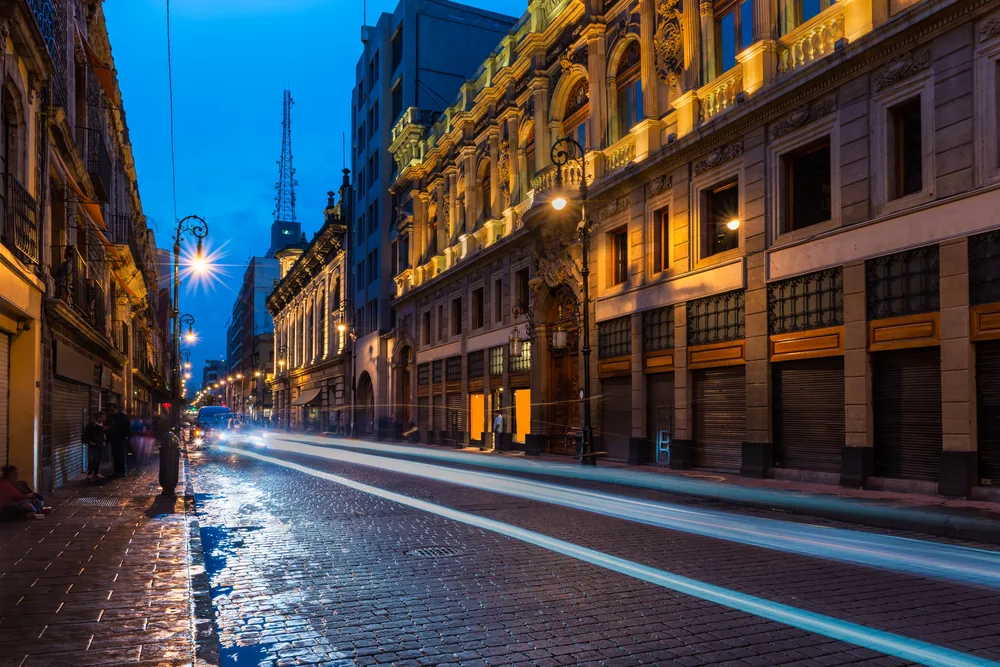
Joshua Davenport/Shutterstock
Here are some other questions travelers to Mexico City had previously:
Is Mexico City safe for U.S. tourists?
Mexico City is not any more dangerous for U.S. tourists than it is for people of other nationalities. People from wealthier western countries are often targeted by pickpockets who see them as more lucrative targets, but Americans are rarely targeted just because of their nationality.
Is it safe to walk at night in Mexico City?
Mexico City is very unsafe to walk at night outside of a few safe nightlife districts in neighborhoods like Roma or Centro Historico. If you are going to check out the bars at night, take a taxi directly there.
Is downtown Mexico City safe?
For the most part, downtown Mexico City is safe. Most rougher neighborhoods are located on the outskirts of the city. There are a few rougher streets around the edges of the Centro Historico, so ask your accommodations host or receptionist about areas to avoid while you are in town.
Are taxis safe in Mexico City?
As long as you take the right taxi, you will be perfectly safe. Make sure that you only use an app such as Uber or Didi or an authorized taxi service.
Is street food in Mexico City safe?
Street food in Mexico City is both safe and delicious, so you would be missing out on a lot if you didn’t try any just because you were nervous! However, there are a few things you should look out for to determine if a stall is safe to eat from.
Never eat somewhere without a source of water to wash vegetables, pre-prepared meat, or without a reasonable crowd of hungry locals around it. If a stall is empty, people probably avoid it for a reason.
So, Should You Travel to Mexico City?
Travelers to Mexico City certainly have to take precautions, but it’s not a dangerous war zone either. Make sure you are not flashing your valuables to attract pickpockets and you thoroughly research the neighborhoods that you go into, and you should have a great time. Happy travels!



